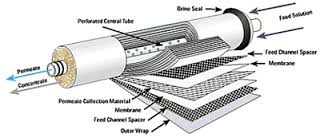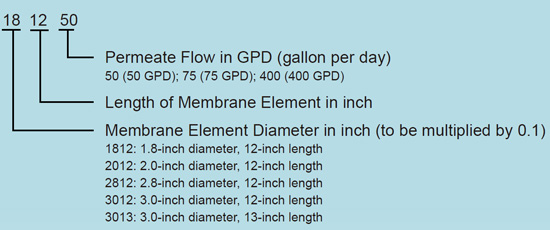RO Reverse Osmosis Membrane
The RO Reverse Osmosis Membrane removes microscopic elements, microorganisms, virus, metal ions, carcinogens and other soluble salt from water effectively and they are flushed down the drain. Pure drinking water is produced by applying pressure to the reverse osmosis membrane by using either a pump or city water pressure.


Early versions of reverse osmosis membranes were often CTA - Cellulose Triacetate material and are rarely produced or available today. TFC - Thin Film Composite or TFM - Thin Film Membrane are the most popular and efficient. TFC membranes are chlorine intolerant. Contact with chlorine will destroy the effectiveness of a TFC membrane. When converting a reverse osmosis system from a CTA membrane to a TFC membrane you will need to use a carbon filter as a prefilter before the membrane. Most RO systems that used a CTA membrane were a 3 stage system. Those systems can simply replace the sediment prefilter with a carbon block prefilter. Be sure to match the flow restrictor with the size of the new membrane.


